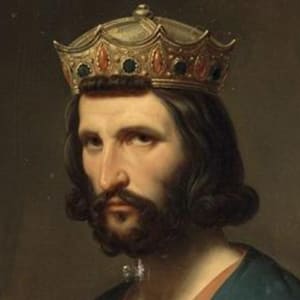
Jimmy Hoffa
Jimmy Hoffa became a labor organizer in the 1930s, rising in the Teamsters Union during the next two decades until he reached the office of president.
Synopsis
Jimmy Hoffa was born on February 14, 1913, in Brazil, Indiana. He became a labor organizer in the 1930s, rising in the Teamsters Union during the next two decades. He played a key role in forging the first national freight-hauling agreement. He was sent to prison in 1967 for jury tampering, fraud and conspiracy. In 1975 he disappeared; he is believed to have been murdered.
Early Life
Still missing and presumed dead, Jimmy Hoffa was one of the most famous labor leaders in American history. Growing up, he saw firsthand the challenges and hardships American workers faced. His father was a coal miner who died when he was still young. His mother went to work to support Hoffa and his three siblings, eventually moving the family to Detroit.
Hoffa had a limited education, with there being conflicting information over whether he ever reached high school. It is known that he dropped out of school to work and help his family. Hoffa eventually went to work on a loading dock for a grocery store chain in Detroit. There he orchestrated his first labor strike, helping his co-workers land a better contract. He used a newly arrived shipment of strawberries as a bargaining chip. The workers wouldn't unload until they had a new deal.
Union Leader
In the 1930s, Hoffa joined the International Brotherhood of Teamsters. He eventually became the president of the union's Detroit chapter. Ambitious and aggressive, Hoffa worked hard to expand the union's membership and negotiate better contracts for his constituents by any means necessary. His extensive efforts paid off in 1952 when he became the vice president of the entire union.
Five years later, Hoffa won the presidency of the Teamsters, replacing Dave Beck. Beck was tried and convicted on charges related to his union activities. Hoffa himself was the subject of numerous investigations but managed to avoid prosecution for many years. In 1961, he scored one of his decisive victories as union president: Hoffa brought together almost all of the truck drivers in North America under one contract. Both the FBI and U.S. Attorney General Robert F. Kennedy kept a close eye on Hoffa, believing that he advanced himself and his union with assistance from organized crime. The Justice Department indicted Hoffa several times, but they failed to win their cases against the popular labor leader. In March 1964, however, the prosecution scored a victory against Hoffa. He was found guilty of bribery and jury tampering in connection with his 1962 federal trial for conspiracy. That July, Hoffa suffered another blow. He was convicted of misusing funds from the union's pension plan.
Hoffa spent three years appealing his convictions, but these efforts proved fruitless. He began serving a possible 13-year prison sentence in 1967, but his sentence was commuted by President Richard Nixon in 1971. As a condition, Nixon banned Hoffa from holding a leadership position in the union until 1980. But Hoffa wasted no time trying to fight that ban in court and working behind the scenes to regain control over the Teamsters.
Mysterious Disappearance
During his career, Hoffa had made more than his fair share of enemies. It is believed that one of his foes may have had a hand in his disappearance in 1975. On July 30 of that year, Hoffa left his Detroit area home for a meeting with a local crime figure and a mob-connected union leader from New Jersey at a restaurant in Bloomfield Township. The get-together was supposed to be about settling a feud, but Hoffa was the only one who showed up. What happened to the former union boss after that remains a mystery. His car was found in the restaurant's parking lot, but there were no clues to Hoffa's whereabouts. Hoffa was declared legally dead in 1982.
Since 1975, the disappearance of Jimmy Hoffa has been the subject of countless theories. Some say he was done in by organized crime or even federal agents. Over the years, authorities have received tips as to the location of Hoffa's remains, but his body has yet to be recovered. One breakthrough came in 2001 with DNA evidence that linked Hoffa to the vehicle that was believed to have to used in the crime. In 2012, the latest tip led authorities to a Detroit home, where an investigation failed to turn up any evidence.
Another effort was made to find Hoffa's remains the following year. In June 2013, the FBI launched a search of a field in Oakland Township, Michigan. The site is about 20 miles away from where Hoffa was last seen. Alleged crime figure Tony Zerilli provided the authorities with the information about where Hoffa was buried. He also described in an e-book he wrote how Hoffa died. According to Zerilli, Hoffa was hit on the head with a shovel and then buried alive. Investigators have yet to unearth any evidence in this latest search.
Personal Life
Hoffa married Josephine Poszywak in 1936. The couple had two children together. Both daughter Barbara Crancer and son James P. Hoffa have publicly campaigned for further investigation into their father's disappearance. James P. Hoffa has also followed in his father's footsteps, serving as the president of the Teamsters Union since 1998.




